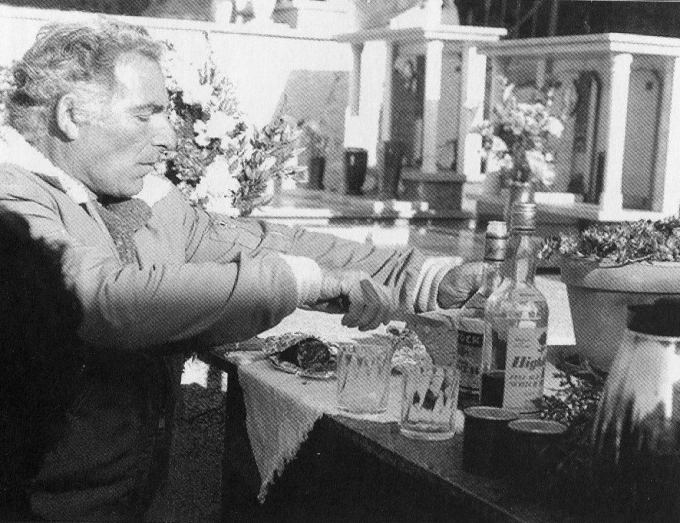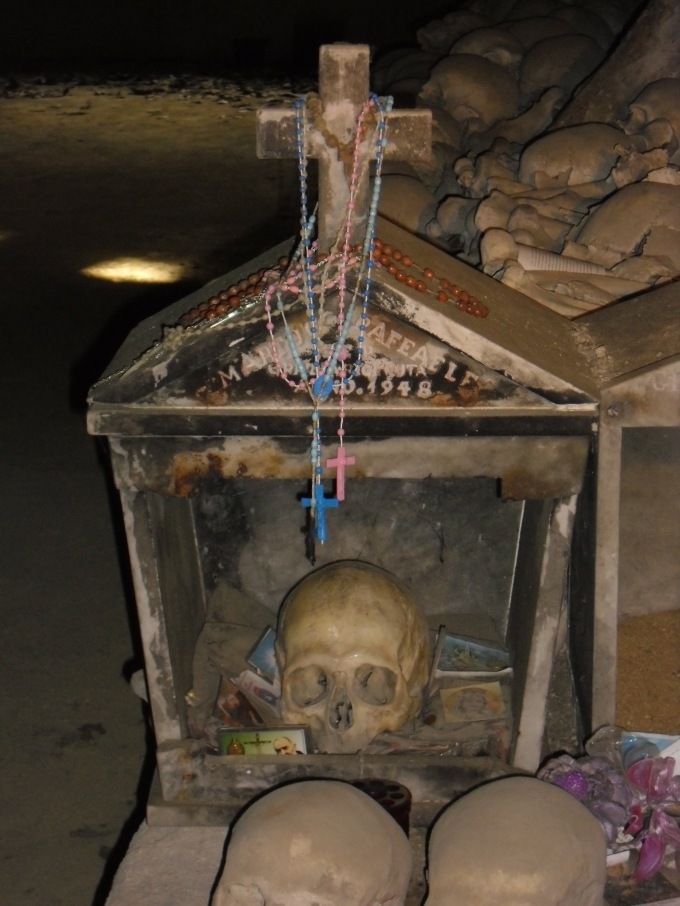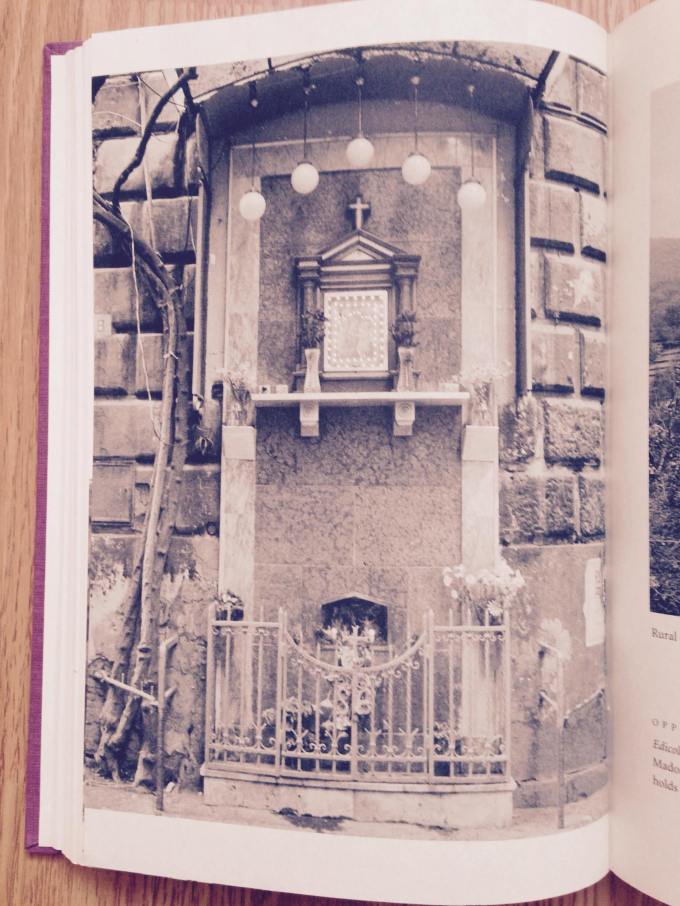“Following death, the body was washed and laid out by the women of the family (prothesis). A passage from Aristophanes indicates that vine branches and the herb origanos were strewn under the body as part of this process. In antiquity, this bitterly pungent herb was believed to repel harmful animals; in later European folklore, we hear of it being used to avert ghosts and demons. Together these observations suggest that its use in funerary rites reflects a fear that even in death, evil forces of some kind were waiting to attack the departing soul or the body. An attack on either would be disastrous: the soul might be diverted by a manipulative magician for his own purposes, and thus be prevented from reaching the haven of the Underworld, and damage to the body could affect the postmortem functioning and thus the happiness of the soul, as the practice of maschalismos [ritual mutilation of corpses by severing extremities] perhaps attests. It was the duty of the survivors to provide protection against such attacks until the body was safely in the ground and the soul had begun its journey to the Underworld…. Perhaps amulets against such attacks were buried with the dead as well; we have some late examples of what seem to be amulets for postmortem protection made out of metal, and it is possible that earlier types of perishable materials once existed, too.
“The traditional length of prothesis was one day; this would fit with the fact it was on the third day after death (counting inclusively) that the body was carried out to the place of burial (ekphora). The swiftness of burial reflects not only the obvious need to remove a decomposing corpse quickly but the perception that the individual no longer belonged amongst the living. As many anthropological studies have discussed, in ancient Greece and elsewhere death initiates a rite of passage for both the deceased and those left behind; the passage begins to approach completion only when the corpse has been removed from the company of the living.
“The deceased was accompanied to the grave by family members and perhaps by other mourners, too, although funerary legislation of the late archaic and classical periods sometimes restricted the number of people who might participate, as well as the places at which they might sing their laments. In Athens, for example, Solon passed laws to the effect that only women over the age of sixty or women closely related to the deceased might take part in the ekphora and lament. Solon’s laws curbed the most extreme forms of lamentation, such as self-laceration, mourning for anyone other than the person immediately dead, and excessive funeral gifts as well. He also ordered that the prothesis take place inside a house, and that the ekphora take place before sunrise on the day after the prothesis. Plato’s laws for funerary conduct in his ideal city take all of these ideas a bit further; real laws in some other places similarly aimed to restrict the ostentation of the funeral, the number of people lamenting or otherwise participating, and the degree to which it was public.
“Offerings were made at the grave at the time of the funeral. These always included choai, libations made of honey, milk, water, wine, or oil mixed in varying amounts. There was also a ‘supper’ (deipnon or dais) of various foods; the dead who partook of these sometimes where described as eudeipnoi, which we best can translate, perhaps, as ‘those who are content with their meal.’ The word, a euphemism, seems to reflect the hope that, once nourished, the dead would realize that they had nothing to complain about. There is some evidence that water was also given to the dead person so that he could wash, just [as] a host would give a living guest water in which to wash before a meal. Offerings to the dead might also include jewelry, flowers, and small objects used in everyday life such as swords, strigils, toys, and mirrors (although gifts, like lamentation, were sometimes restricted by funerary laws). It is hard to avoid the conclusion that these gifts were expected to be useful in the afterlife, particularly when ghost stories tell of the dead demanding objects that were forgotten or omitted at the time of burial.
“A grave marker (sema or stele) often was set up at some time after burial; according to Cicero, post-Solonian Athenian funerary laws attempted to restrict the size or grandeur of these markers. The stele or sema subsequently might be decorated with ribbons, myrtle branches, or fillets of colored wool; it was also common for survivors to cut off and offer some of their hair. Several theories have been proposed to explain the latter practice. One argues that offerings of hair were symbolic human sacrifices–pars pro toto–and another that cropped hair marked the survivors as being ‘different,’ as being in a marginal period of mourning. Either idea could be supported by interpreting funerary offerings of hair within the context of other occasions when the Greeks made offerings of hair, which tended to be associated with marginal periods as well….
“The separation process continued to move the living and the dead further apart, but the link was not completely broken. On certain days after the funeral (the third, ninth, thirtieth, and possible also after a year), additional offerings were made at the grave. Some evidence suggests that, as nowadays, offerings were also made on the anniversary of the deceased’s birth, death, or both, and that survivors made additional offerings whenever they wanted the help of the dead person, or whenever they wanted him or her to participate, albeit distantly, in a family occasion such as a wedding….the Greeks themselves so often describe these rites as fulfilling the needs and desires of the deceased that we must accept this as a serious motivation. Funerary rites were believed to benefit the dead, and deprivation of them meant an unhappy afterlife for the disembodied soul. In other words, Greek funerary rites attest to the expectation that the deceased had some sentience in the afterlife and some of the same desires that he or she had had while alive, and to the idea that the living could–and should–gratify those desires.”
Sarah Iles Johnston, Restless Dead: Encounters between the Living and the Dead in Ancient Greece, pp. 39-43


